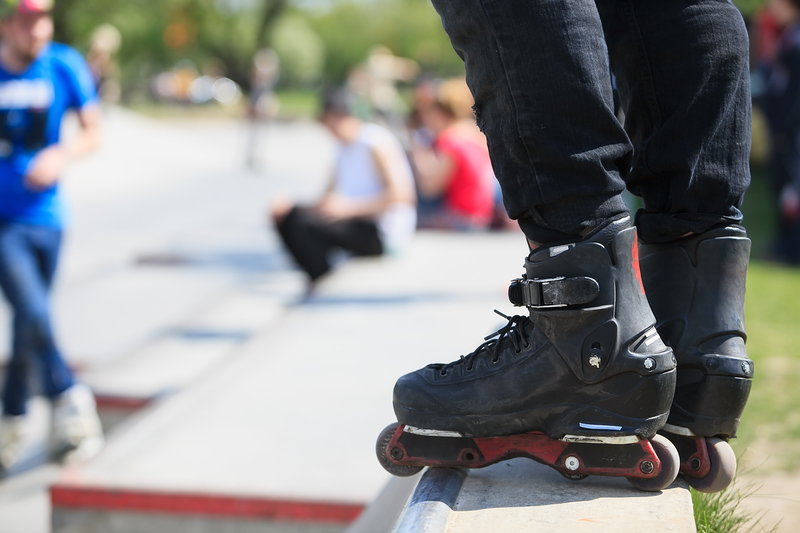Master the Art of Moving Your Bed and Mattress: The Ultimate Guide
Moving house, redecorating, or rearranging your bedroom can all present a challenging task: moving your bed and mattress. While handling a large piece of furniture can feel overwhelming, with the right strategy and best practices, you can ensure your items stay undamaged and you remain injury-free. In this comprehensive guide, you will learn the proven steps and expert tips to master the art of moving your bed and mattress like a pro.
Why Is Moving Your Bed and Mattress Challenging?
Your bed and especially your mattress are among the bulkiest and heaviest items in your home. An average queen-sized mattress can weigh between 60 to 90 pounds (27 to 41 kg), and beds often have awkward shapes or parts that can be difficult to handle. Knowing how to efficiently move your bedframe and mattress preserves their condition and also protects your safety.
The Risks of Moving a Bed and Mattress Incorrectly
- Personal Injury: Improper lifting can cause back, shoulder, or knee injuries.
- Damaged furniture: Bends, scratches, or broken slats are common mishaps if beds aren't disassembled properly.
- Dirty or torn mattresses: Mattresses can collect stains, tears, or bedbugs if not protected during the move.
Fortunately, with the right method and planning, you can eliminate these risks and simplify your move.

Preparing Your Bed and Mattress for the Move
Organization is key. Before you even touch a screw or mattress handle, spend a few minutes planning your approach so every step unfolds smoothly.
Step 1: Gather the Necessary Tools and Supplies
- Mattress bag or cover
- Furniture blanket or pads
- Screwdriver set or Allen wrenches
- Moving straps or lifting slings
- Packing tape and zip ties
- Permanent marker
- Plastic bags (for screws, bolts, and other small parts)
These simple items can make moving your mattress and bedframe easier, faster, and safer.
Step 2: Clear Your Pathway
Before you start moving your bed and mattress, visualize the route you will take. Remove obstacles such as:
- Nightstands
- Lamps
- Rugs or cords
- Wall art that may snag on your mattress
This not only prevents damage but also reduces the risk of tripping during heavy lifting.
Step 3: Measure Doorways, Hallways, and Staircases
Measure not just your mattress and bed frame dimensions, but also the width and height of doors and hallways along the route. Some large pieces, like king mattresses or platform beds, may need special maneuvering or temporary removal of doors. Don't overlook this surprisingly crucial step!
Step 4: Recruit Help
Moving heavy furniture is not a solo job. Ideally, get at least one helper for manageable sizes. For moving large beds and mattresses, two or more friends are best. If friends aren't available, consider hiring professional furniture movers.
How to Disassemble Your Bed Frame
Disassembling your bed makes transport more manageable, reduces the risk of damage, and saves precious space in your moving truck.
Tools You'll Need
- Power drill or screwdriver
- Allen wrenches
- Plastic bags and labels
General Disassembly Steps
-
Remove bedding and mattress:
- Take off pillows, sheets, and comforters first.
- Lift mattress off and set aside.
-
Detach the headboard and footboard:
- Unscrew bolts or use an Allen wrench for hex screws.
- Keep hardware in labeled bags.
-
Disassemble side rails and support slats:
- Some slats just lift right out, while others may need unscrewing.
- Stack all parts together for easy reassembly.
-
Secure loose parts:
- Bundle and tape wooden slats or rails together.
- Attach labeled hardware bags to main frame pieces with tape.
Tip: Take photos as you go to streamline reassembly at your new place.
Properly Packing Your Mattress for Moving
Mattresses are an expensive investment--prevent stains and tears by using the proper mattress moving technique.
Step-by-Step Mattress Packing
- Clean the mattress: Vacuum and wipe it before packing.
- Encase in a mattress bag: Heavy-duty plastic bags are best. Slide the mattress inside, then seal the open end with packing tape to keep out dust and bugs.
- Add extra protection: Wrap with furniture blankets or additional plastic if moving in bad weather.
Never bend or fold your mattress, especially if it's an innerspring or memory foam model. Bending can permanently damage the support inside!
How to Move a Bed and Mattress on Your Own
Solo movers, take note! Here's how to tackle the challenge of moving your bed and mattress safely, even if help is scarce.
Lifting and Carrying Tips
- Use moving straps: These let you leverage your legs (not your back) to lift.
- Slide, don't drag: For beds and frames, place moving blankets underneath and gently slide along smooth surfaces.
- Walk the mattress: Stand it on its side and maneuver carefully through doorways.
- Take frequent breaks: Listen to your body, especially during stairs or tight corners.
Using Dollies and Carts
For heavier sleepers or platform beds, use a furniture dolly for the mattress and boxed components. Secure them with straps so nothing shifts during transport.
Loading into a Moving Truck
- Load the mattress upright (on its side) against a truck wall for the best space savings and to avoid pressure marks.
- Use bungee cords or rope to secure so it doesn't tip or slide.
- Position the bed's heaviest pieces on the bottom for stability.
Moving a Bed and Mattress Up or Down Stairs
Stairs add an extra challenge. Here's how to move your bed and mattress up or down stairs safely:
- Always have a helper to guide and balance heavy pieces.
- Carry mattresses and long rails vertically when possible.
- Move slowly, one step at a time, keeping the bed or mattress close to your body.
- For very tight turns, use a "stand and pivot" method: stand the mattress on its end and slowly rotate the bottom around corners.
If the staircase is too narrow for your straight mattress, consider alternate entry points (like windows with help from professional movers!).
Special Considerations for Different Bed Types
Platform Beds
- Usually heavy and contain many parts.
- Label components and take extra care with slats and drawers.
Bunk Beds
- Disassemble to the smallest parts to ensure safe, easy movement.
- Mark each section for quick reassembly.
Adjustable Beds
- Disconnect electronic cords and controllers first!
- Remove and pack the remote and cords separately in a clearly labeled bag.
- Use the manual (or take photos) to remember wiring layouts.
Reassembling Your Bed and Mattress After the Move
Once you've arrived at your new home, follow these steps to set up your bed and mattress efficiently:
- Place the frame pieces in your chosen room: Ensure you have enough clearance around the bed.
- Reassemble the bedframe: Use hardware you carefully bagged earlier, and follow pictures or directions from disassembly.
- Set slats and supports: Ensure they are sturdy before adding your mattress.
- Unwrap and place your mattress: Remove the bag and inspect for damage. Air out the mattress for a few hours if possible.
- Add bedding: Pillows, covers, and sheets are the final touch.
If you run into issues during reassembly, refer to the manufacturer's manual or online guides for your bed model.
Mattress and Bed Moving Tips for Long-Distance Moves
Are you moving across the country? Here are extra precautions for relocating your mattress and bed for long distances:
- Double-bag your mattress for maximum dirt and moisture protection.
- Keep slats, bolts, and small pieces in your vehicle or a "first open" box - not the main moving truck - so you can set up your bed ASAP.
- If you'll be in storage for a while, add silica gel packs inside the mattress bag to absorb moisture and prevent mildew.

FAQs About Moving Your Bed and Mattress
1. Can I move my mattress without a mattress bag?
No, it's risky. A mattress bag protects your mattress from dirt, moisture, and tears. If you can't find one, use a thick tarp or plastic wrap as an alternative.
2. How do I move a memory foam bed or hybrid mattress?
Follow the same steps, but be extra careful not to fold or bend memory foam. Always stand it on its side and do not stack heavy objects on top during transit.
3. What's the best way to move a king-size mattress?
King mattresses are large and floppy. Use two helpers, secure tightly in a mattress bag, and always carry it vertically. For narrow staircases, consider professional movers with mattress harnesses.
4. How do pros move mattresses?
Professional movers use mattress bags, specialized dollies, shoulder straps, and always measure entryways first. They often wrap bedframes in moving blankets and disassemble and label every part.
Conclusion: Move Your Bed and Mattress Like a Pro
Mastering the art of moving your bed and mattress isn't just about muscle--it's about preparation, the right tools, and proper technique. By following the detailed steps in this guide, you'll ensure your mattress and bedframe survive the move in perfect condition, ready to offer you a great night's sleep in your new home.
Whether you're moving a few blocks or across the country, take the time to protect your investment--and your back--by planning ahead, disassembling carefully, and never moving heavy furniture alone. Happy moving!






